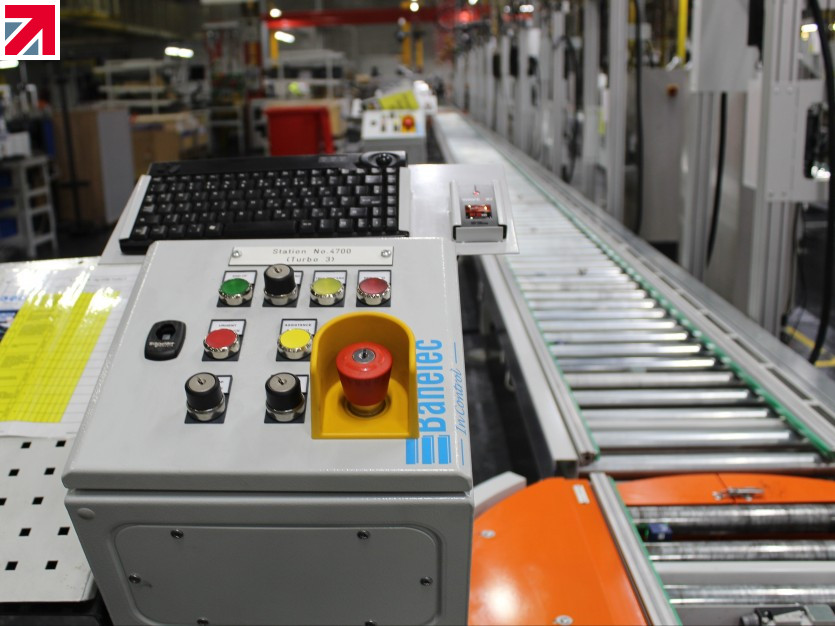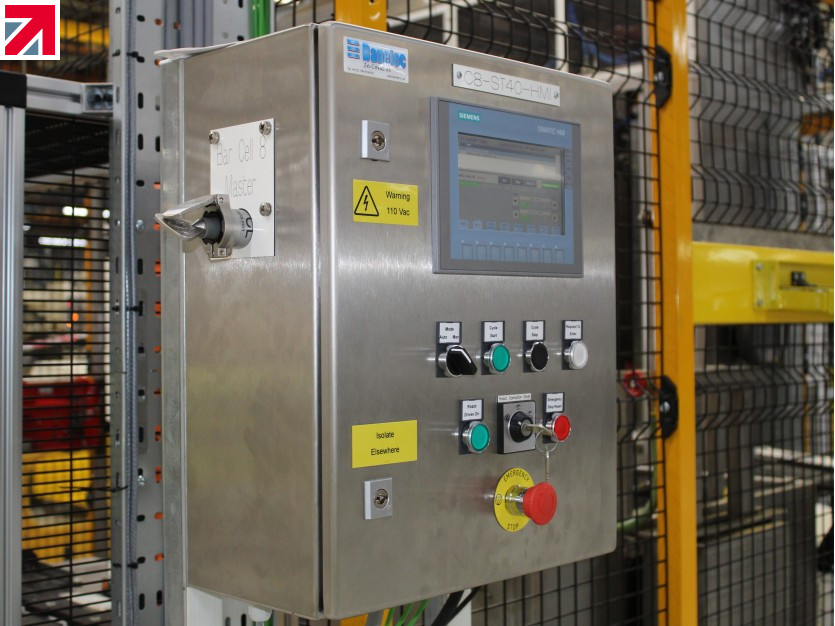Industrial control systems are playing a pivotal role in helping to develop the factories of the future, writes Made in Britain member Banelec.
They are made up of the devices, technologies, networks, and controls used to operate and automate manufacturing, engineering and production processes across a wide range of industries.
Each part of an industrial control system is built to manage and automate the function it is responsible for as efficiently as possible.
When combined across an entire process, it results in huge improvements in production capacity and output, safety, productivity, product quality, and consistency.
There are many different types of industrial control systems, and you may be more familiar with some than others.
For example, robotics used in industrial manufacturing, variable-speed conveyor belts and precision manufacturing equipment all need industrial control systems to control their speed and movements precisely.
Increased productivity is the key element that most manufacturers and engineers look to achieve through automation.
Here, we look at the main components of an automated industrial control system and the benefits it can offer.
Components of an industrial control system
Electrical controls sit at the heart of every automated system to make it operate the way it needs to.
The way an electrical control system is built, and the technology it uses, can have a significant bearing on how effective and efficient the system will perform.
However, there are several other elements to an industrial control system, and each one depends on the others to ensure the whole thing performs effectively.
The main components include:
Operational technology
The operational technology of an industrial control system includes the hardware and software systems that monitor and control physical devices at each stage of the industrial process, from conveyors and robotics to monitors, sensors, and control panels.
Programmable Logic Controller (PLC)
PLCs are the main control component of an overall system. They provide local management of processes being run through feedback control devices, such as sensors and actuators.
Control Server
A control server hosts the PLC’s control software and communicates with lower-level devices across the system.
Master Terminal Unit (MTU)
This is a device that issues commands to remote terminal units in the process (see below).
Remote Terminal Unit (RTU)
The RTU is a microprocessor-controlled field device that receives commands and sends information back to the MTU.
Control Loop
A control loop comprises hardware, including PLCs and actuators. It interprets the signals from sensors, control valves, breakers, switches, motors, and other similar devices, then transmits them back to the PLC to enable it to control the process more effectively.
Human Machine Interface (HMI)
The HMI allows interaction between the human operator and the controller hardware to monitor data, set parameters, and make tweaks to the controllers to adjust or improve the process.
Intelligent Electronic Device (IED)
An IED is an intelligent device capable of acquiring and analysing data, communicating with other devices and automating local processing and control functions.
Remote diagnostics and maintenance
An industrial control system with remote diagnostics can monitor, identify and predict its maintenance requirements, and prevent and recover from abnormal operations or failures.
Data historian
This is a centralised database of logs for all the process information from within the industrial control system. Once gathered, this data can be analysed to identify improvements, trends and general performance issues.
Benefits of an industrial control system
Industrial automation brings many benefits to traditional manufacturing processes and is transforming the way that many businesses across the sector operate. Some of the main advantages of investing in end-to-end industrial control systems include:
Quality Assurance
Industrial control systems can help manufacturers achieve and maintain consistent product quantity and quality across their entire production process. It means they can meet the demand for precise specifications and quality, and avoid human error.
Less Waste
Automated processes allow for more precision than manual or human-dependent processes, which not only makes them more efficient but can also result in less waste from over-processing or material usage.
Lower operating costs
Again, automating the entire process can make production more efficient and lead to a reduction in costs.
Production planning and control
Industrial control systems allow for a more strategic approach to production planning and control to maximise production capacity and output and scheduled maintenance and downtime.
Unleash your full potential with industrial automation
Automation is the key to achieving improvement through technology.
While upgrading individual elements of a production system can deliver significant gains, automating an entire process unlocks continuous improvement.
If you’re looking for a fully automated industrial control system or want to implement a new automated section into an existing production process, we can help you achieve the improvements you’re looking for.
Our automation services include complete systems, electrical controls, robotics and conveyor controls.
Whatever you do, if you want to do it better, get in touch.
Find out more about Banelec Ltd on their member profile page here
Member-created content 4 years ago | From members

